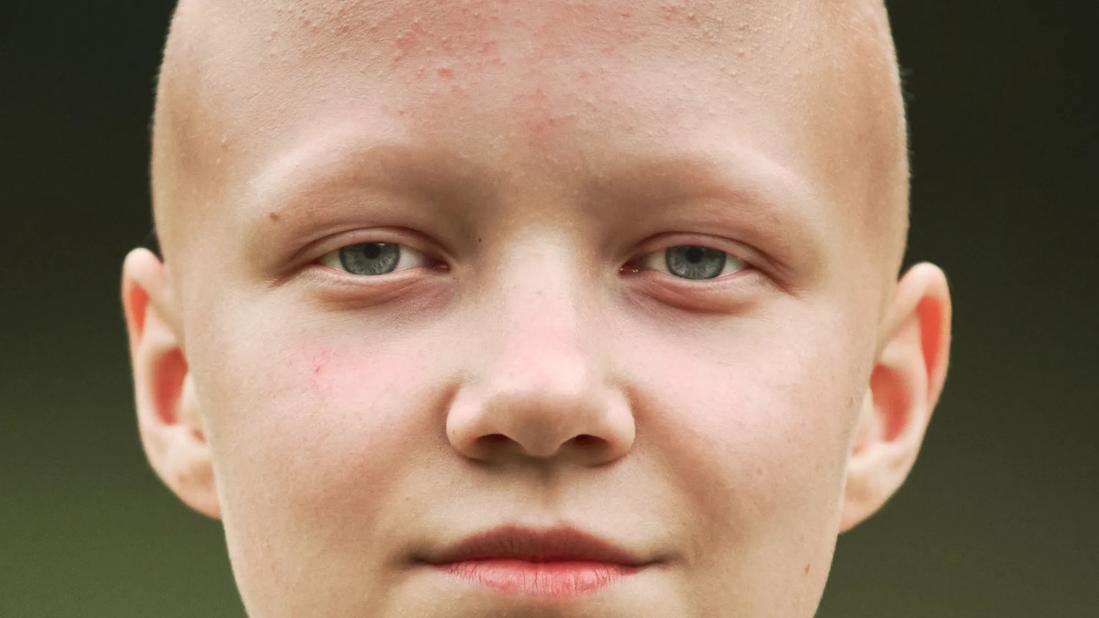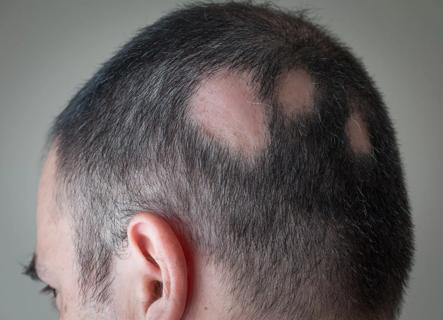Your immune system may attack hair follicles anywhere on your body

When you have alopecia areata, the autoimmune disease may cause you to lose your eyebrows and eyelashes in addition to experiencing patchy hair loss on your scalp. Many of the treatment options used for hair loss on your scalp can also be used to treat alopecia areata eyebrows and eyelashes.
Advertisement
Cleveland Clinic is a non-profit academic medical center. Advertising on our site helps support our mission. We do not endorse non-Cleveland Clinic products or services. Policy
Eyebrow and eyelash loss (known as madarosis) is common in people with alopecia areata.
“The immune system’s attack on the hair follicles can occur anywhere on the body,” says dermatologist Stephanie Trovato, MD. “Some studies have shown a connection between the likelihood of eyebrow and eyelash loss and an increase in the severity of hair loss on the scalp.”
Some of the treatments used for hair loss from alopecia areata can also treat eyebrow and eyelash loss — but because the areas around the eyes are so sensitive, the treatments may need to be modified a little.
Treatment options may include:
Your healthcare provider will recommend a treatment for eyebrow and eyelash loss that’s right for you while considering factors like how severe your alopecia areata is.
Advertisement
“There isn’t one form of treatment that will work for everyone,” explains Dr. Trovato. “It’s very dependent on your unique situation.”
Dr. Trovato stresses that the timeline to see regrowth is based on the severity of your condition and your treatment plan.
“For topical anti-inflammatory medications, we hope to see some fine regrowth within three to six months of starting treatment,” she says.
Your eyebrows and eyelashes do more than just add to your physical appearance. They keep dust and debris from your eyes. If you’ve lost your eyebrows or eyelashes, Dr. Trovato suggests the following:
When you have alopecia areata, there’s a good chance it may affect your eyebrows and eyelashes. If you begin to notice sparse eyebrows or lashes, there are things you can do to manage any hair loss in those areas. It’s also a good idea to talk to your doctor, who can recommend treatment options.
“Early evaluation and treatment by a board-certified dermatologist can be pivotal in aiding the regrowth of hairs on the eyebrows and eyelashes in the setting of alopecia areata,” concludes Dr. Trovato.
Advertisement
Learn more about our editorial process.
Advertisement

Take steps to reduce stress by practicing meditation, finding time to relax and maintaining a healthy lifestyle

You may see pitting, brittleness or ridges in your fingernails and toenails

It’s normal to lose around 50 to 150 strands per day to routine hair shedding

Studies are mixed, but frequently wearing very tight, warm hats could stress your follicles and lead to hair loss

Things like stress, heated styling and other health conditions may cause you to lose more hair than normal

Creatine does cause some side effects, but hair loss probably isn’t one of them

A gentle hair care routine, stress reduction and sun protection can help reduce flares and maintain your locks

Home remedies may help your hair, but don’t expect them to cure the autoimmune disease

Leg-related symptoms indicate DVT, while chest symptoms point to a pulmonary embolism

There are many different ways to love someone and yourself

Looking down at your smartphone or computer screen can stress muscles in your neck, shoulders and back